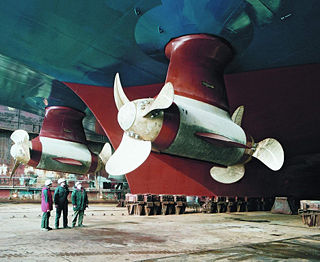This page is based on this
Wikipedia article Text is available under the
CC BY-SA 4.0 license; additional terms may apply.
Images, videos and audio are available under their respective licenses.

Gimbal lock is the loss of one degree of freedom in a three-dimensional, three-gimbal mechanism that occurs when the axes of two of the three gimbals are driven into a parallel configuration, "locking" the system into rotation in a degenerate two-dimensional space.
The magnetic quantum number is one of four quantum numbers in atomic physics. The set is: principal quantum number, azimuthal quantum number, magnetic quantum number, and spin quantum number. Together, they describe the unique quantum state of an electron. The magnetic quantum number distinguishes the orbitals available within a subshell, and is used to calculate the azimuthal component of the orientation of orbital in space. Electrons in a particular subshell are defined by values of ℓ. The value of ml can range from -ℓ to +ℓ, inclusive of zero. Thus the s, p, d, and f subshells contain 1, 3, 5, and 7 orbitals each, with values of m within the ranges 0, ±1, ±2, ±3 respectively. Each of these orbitals can accommodate up to two electrons, forming the basis of the periodic table.

A propulsor is a mechanical device that gives propulsion. The word is commonly used in the marine vernacular, and implies a mechanical assembly that is more complicated than a propeller. The Kort nozzle and pump-jet are examples.
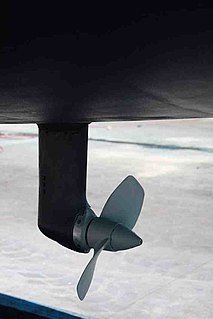
A saildrive is a transmission system for a boat whose inboard engine has a horizontal output shaft. The saildrive's input shaft is therefore also horizontal. That input shaft is geared so as to drive a vertical intermediate shaft extending downward through the hull. The intermediate shaft is then geared so as to drive a horizontal propeller shaft mounted on a skeg outside the hull.

A Z-drive is a type of marine propulsion unit. Specifically, it is an azimuth thruster. The pod can rotate 360 degrees allowing for rapid changes in thrust direction and thus vessel direction. This eliminates the need for a conventional rudder.

The United States Coast Guard commissioned a new Keeper class of coastal buoy tenders in the 1990s that are 175 feet in length and named after lighthouse keepers.

Azipod is an electric podded azimuth thruster produced by ABB Group. Developed in Finland jointly by the shipbuilding company Masa-Yards and ABB, Azipod is a marine propulsion unit consisting of a fixed pitch propeller mounted on a steerable gondola ("pod") which also contains the electric motor driving the propeller.

BRP Gregorio Velasquez is a research vessel formerly operated by Scripps Institution of Oceanography for oceanographic research. As the R/V Melville, it was the oldest active vessel in the academic research fleet, collectively known as the University-National Oceanographic Laboratory System (UNOLS). The US Government confirmed on 17 November 2015 that the Melville will be transferred to the Philippine Navy as Excess Defense Articles (EDA)s. The vessel was officially transferred to the Philippines on 28 April 2016 and was commissioned into active service at the same time with the Philippine Navy.

Mariner of the Seas is one of five Voyager-class cruise ships of Royal Caribbean International and can accommodate 4,252 passengers.

Turbo-electric transmission uses electric generators to convert the mechanical energy of a turbine into electric energy and electric motors to convert it back into mechanical energy to power the driveshafts.
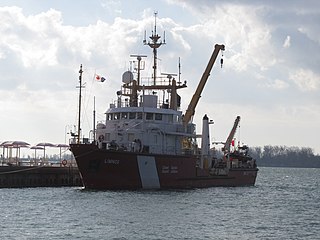
CCGS Limnos is a Canadian Coast Guard coastal research and survey vessel. The ship entered service in 1968 and is currently active. The ship is based on the Great Lakes at the Coast Guard Base in Burlington, Ontario and is used for hydrographic and limnological research.

The Finnish maritime cluster is a cluster of Finnish companies in maritime industries. In 2016 the total turnover was estimated at 13 billion euros and it employed 48,000 people.
A radio frequency (RF) resonant cavity thruster, also known as an EmDrive, is a hypothesized type of propellant-free thruster that was proposed in 2001 by Roger Shawyer. The proposed principle of operation for this device was shown to be inconsistent with known laws of physics, including conservation of momentum and conservation of energy. No plausible theory of operation for such drives has been proposed.
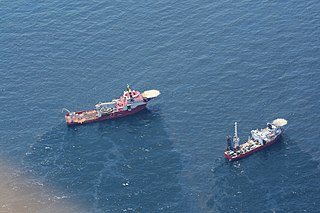
Skandi Neptune is an Offshore Construction Vessel that was operated by Subsea 7 from 2005 until the charter was ended in 2015.
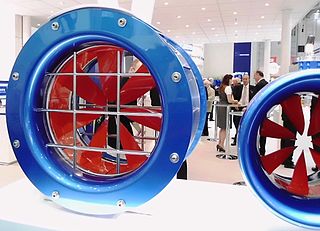
Rim-Driven Thruster is a novel type of propulsion unit which was presented at the Shipbuilding, Machinery & Marine Technology 2010 trade fair (SMM) by the companies Voith and Van der Velden.
Schottel is a manufacturer of propulsion and steering systems for ships and offshore applications. The company founder Josef Becker invented the rudderpropeller, a z-drive, in 1950. Today the company develops and manufactures azimuth propulsion, maneuvering and steering systems. In 2014 the subsidiary Schottel Hydro was founded to bundle up the company activities in the hydrokinetic energy segment.
A marine thruster is a device for producing directed hydrodynamic thrust on a marine vehicle. The thrust direction may be fixed or steerable.
Examples of marine thrusters include screw propellers, Voith-Schneider propellers, waterjets, ducted propellers, tunnel bow thrusters and stern thrusters, azimuth thrusters, rim-driven thrusters, ROV and submersible drive units.
Marine thrusters may be used for propulsion, maneuvering and steering, attitude control and dynamic positioning.
Steerprop Oy is a Finnish company that produces azimuth thrusters for marine propulsion. The company was established in 2000 in Rauma by a group of people who had previously worked at Rolls-Royce Marine Division.
